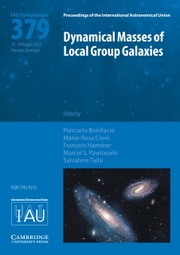Article contents
The next decade of Solar System discovery with Pan-STARRS
Published online by Cambridge University Press: 01 August 2006
Abstract
The Panoramic Survey Telescope and Rapid Response System (Pan-STARRS) at the University of Hawaii's Institute for Astronomy is a funded project to repeatedly survey the entire visible sky to faint limiting magnitudes (mR ~ 24). It will be composed of four 1.8m diameter apertures each outfitted with fast readout orthogonal transfer Giga-pixel CCD cameras. A single aperture prototype telescopes has achieved first-light in the second half of 2006 with the full system becoming available a few years later. Roughly 60% of the surveying will be suitable for discovery of new solar system objects and it will cover the ecliptic, opposition and low solar-elongation regions. In a single lunation Pan-STARRS will detect about five times more solar system objects than the entire currently known sample. Within its first year Pan-STARRS will have detected 20,000 Kuiper Belt Objects and by the end of its ten year operational lifetime we expect to have found 107 Main Belt objects and achieve ~90% observational completeness for all NEOs larger than ~300m diameter. With these data in hand Pan-STARRS will revolutionize our knowledge of the contents and dynamical structure of the solar system.
Information
- Type
- Contributed Papers
- Information
- Proceedings of the International Astronomical Union , Volume 2 , Symposium S236: Near Earth Objects, our Celestial Neighbors: Opportunity and Risk , August 2006 , pp. 341 - 352
- Copyright
- Copyright © International Astronomical Union 2007
References
- 10
- Cited by

